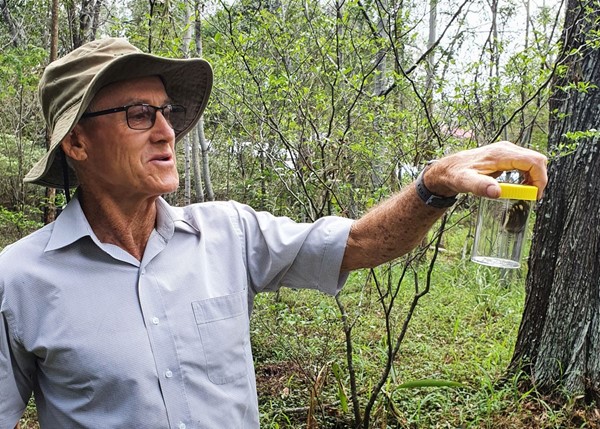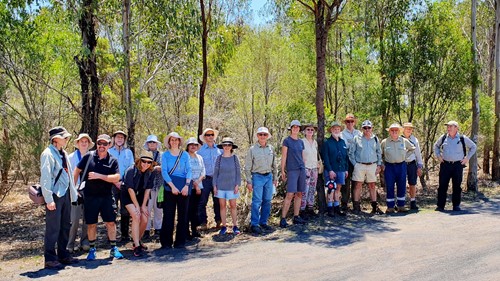
Green thumbs up for Queensland’s first tree evaluation project
17 January, 2023
Nine years after nearly half a million saplings were planted at Wacol, the majority of trees are growing well and now supporting more than 50 species of wildlife, according to a newly released report.
The findings come from an expansive tree evaluation project – believed to be the first of its kind in Queensland - that engaged citizen scientists to take a closer look at the results of Brisbane City Council’s Two Million Trees program.
The Hut Environmental and Community Association (THECA) Coordinator Greg Siepen said he believed this was the first time a project of this size and purposed had been conducted in Queensland.
“I have been working in community nature conservation for over 40 years, and I have never seen a tree evaluation project like this, of this scale, done before,” Mr Siepen said.
"Ten plots were surveyed as part of the project with the survey revealing the trees had progressed well and their condition was regarded as satisfactory to good.
“What made this project so special was the fact that we had community members involved with students and recent graduates recording the health of trees and occurrence of wildlife.”
Speciality environmental engineering company The Water & Carbon Group (WCG) was the principal contractor engaged by Brisbane City Council to plant nearly 500,000 trees, made up of almost 60 different native species, across different sites in 2011.
WCG Environment and Ecological Restoration Manager Dan Cole coordinated the Wacol Government Precinct tree planting project, including restoration plans, plant procurement, and planting the saplings across 80 hectares.
“We planted 400,000 saplings in corridor plantings along Wolston Creek and the Brisbane River. The Wacol sites were part of a significant effort to restore this area of the Brisbane River floodplain,” Mr Cole said.
“There was approximately six hectares and 7500 trees dedicated to establishing a koala fodder plantation for the state government. So it’s great to revisit this program now and see how things have progressed.”
Certain native tree species had high survival rates across the plots, while other species were more hit and miss. Weeds were a common problem across the surveyed area, but the citizen scientists found they had not affected the growth and condition of surviving trees.
The project also identified 49 bird species, one snake and two lizards, while motion-sensor cameras revealed several mammals that were mainly active at night.
Citizen scientist Don Begbie jumped at the opportunity to join the project and improve his conservation skills.
“It was a great experience to be part of - to not only gain skills but also to impart knowledge where we can about growth rates of trees and vegetation,” Mr Begbie said.
“We got to learn from each other and that was the best part. You feel your contribution is being valued to a certain extent.”
Don said he picked up new skills such as carrying out bird surveys, but his real interest was learning about tree growth.
“The reason why we are doing this is to encourage biodiversity and improve the habitat for animals and small mammals. It was a certainly a useful exercise.”
The complete Evaluation of Large-scale Tree Plantings report can be found here.






